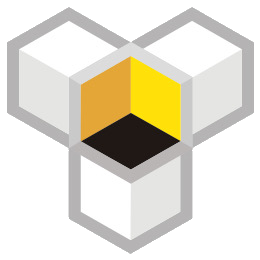Key Elements for Building Large Website Clusters
Unified design style and user experience
The construction of a large website group refers to building multiple related websites within a group or company to achieve brand integration, marketing promotion, and other purposes. Common large website groups include corporate official websites, product showcase websites, e-commerce platforms, social media, news and information websites, etc. When constructing a large website group, the following aspects need to be considered:
-
Develop brand design guidelines: clarify visual communication and design requirements to ensure that all website designs conform to the brand image.
-
Use the same UI components: ensure the consistency of interface elements to enhance user usability and comfort.
-
Unified layout and style: ensure that each website has a unified design style and positioning to improve user experience.
-
Regularly conduct user testing: collect user feedback and suggestions, continuously improve website design and interaction experience.
-
Establish a user research center: conduct user behavior research and surveys to gain in-depth understanding of user needs, and timely adjust and optimize website design.
Establish a complete brand design specification, use the same UI components, unified layout and style, regularly conduct user testing and establish a user research center, etc., all of which can help unify design style and user experience.
Reasonable technical architecture
Different websites may use different technical architectures, but it is necessary to ensure that the technical architecture of the entire website group is coordinated for easier management and maintenance. To achieve a reasonable technical architecture, the following aspects can be taken into account:
-
Choose the appropriate technology stack: Select the appropriate technology stack based on the requirements and characteristics of different websites.
-
Adopt a distributed architecture: Improve the scalability and stability of the website.
-
Use open source technology: Reduce technical costs, improve development efficiency, and maintainability.
-
Establish a sound code management and automated testing process: Improve code quality, ensure stability, and maintainability.
-
Real-time monitoring and log analysis: Improve the stability and security of the website.
Choosing the right technology stack, adopting a distributed architecture, using open source technologies, establishing a comprehensive code management and automated testing process, real-time monitoring, and log analysis can all help achieve a reasonable technical architecture.
Content Management System
Every website needs regular updates and the publication of new content, therefore, it is necessary to establish a comprehensive content management system to facilitate updates and publications on various websites. To achieve effective content management and updates, the following aspects can be taken into consideration:
-
Establishing a comprehensive content management system: A content management system (CMS) that enables easy and quick publishing, modification, and deletion of content.
-
Developing a reasonable content strategy: Planning content themes, types, frequency, etc., based on website goals and user needs.
Establishing a comprehensive content management system and developing a reasonable content strategy can improve work efficiency and content quality.
Organizing an excellent content production team
To ensure the quality and innovation of website content, building a large-scale website group requires organizing an experienced, professional, and creative content production team. Team members should receive training and learning to master the latest content production techniques and trends.
Emphasis on multimedia content production
In addition to textual content, multimedia content production should also be valued, such as images, videos, audio, etc., to enhance user experience and attract more users.
Real-time monitoring and analysis of website data
By monitoring and analyzing website data, you can promptly understand user behavior and feedback, identify issues and opportunities, in order to adjust and optimize content production and publishing strategies in a timely manner.
Reasonable promotion strategy
Building a large-scale website group also needs to consider marketing and promotion issues. Formulating appropriate promotion strategies can increase exposure and traffic. Promotion strategies may include developing marketing plans and budgets, combining SEO optimization, utilizing social media, using advertising placements, and participating in industry events and exhibitions, etc.
Considering various aspects comprehensively
Building a large-scale website network requires comprehensive consideration of technology, design, content, and marketing, among other aspects, to achieve the ultimate business goals.

